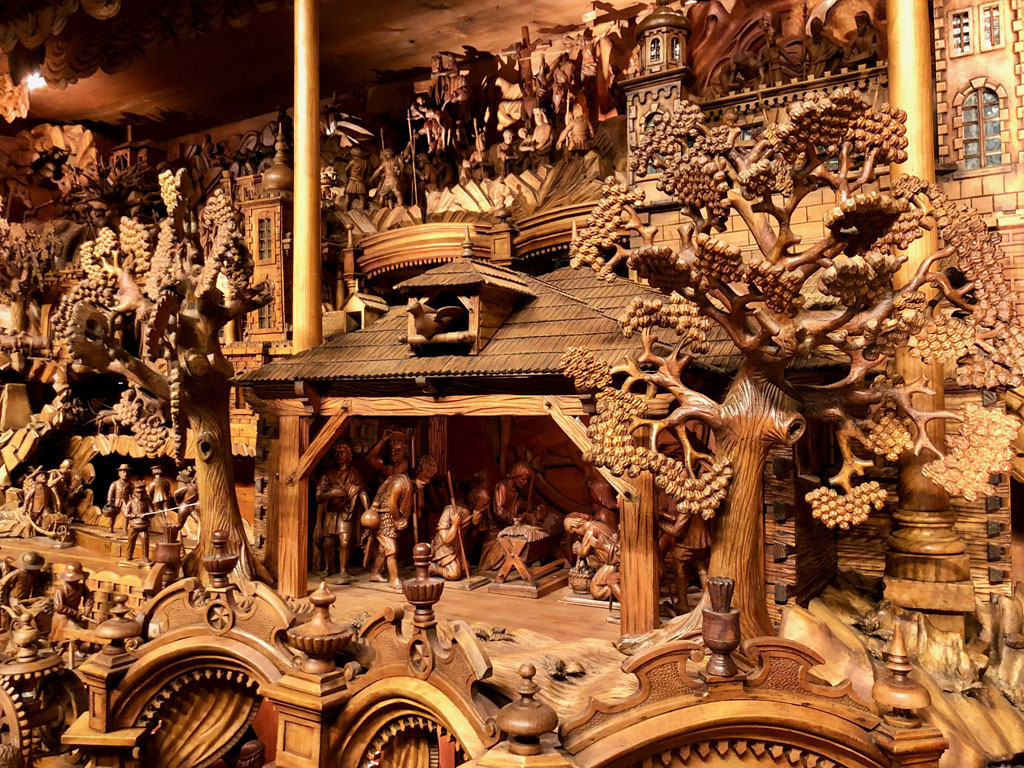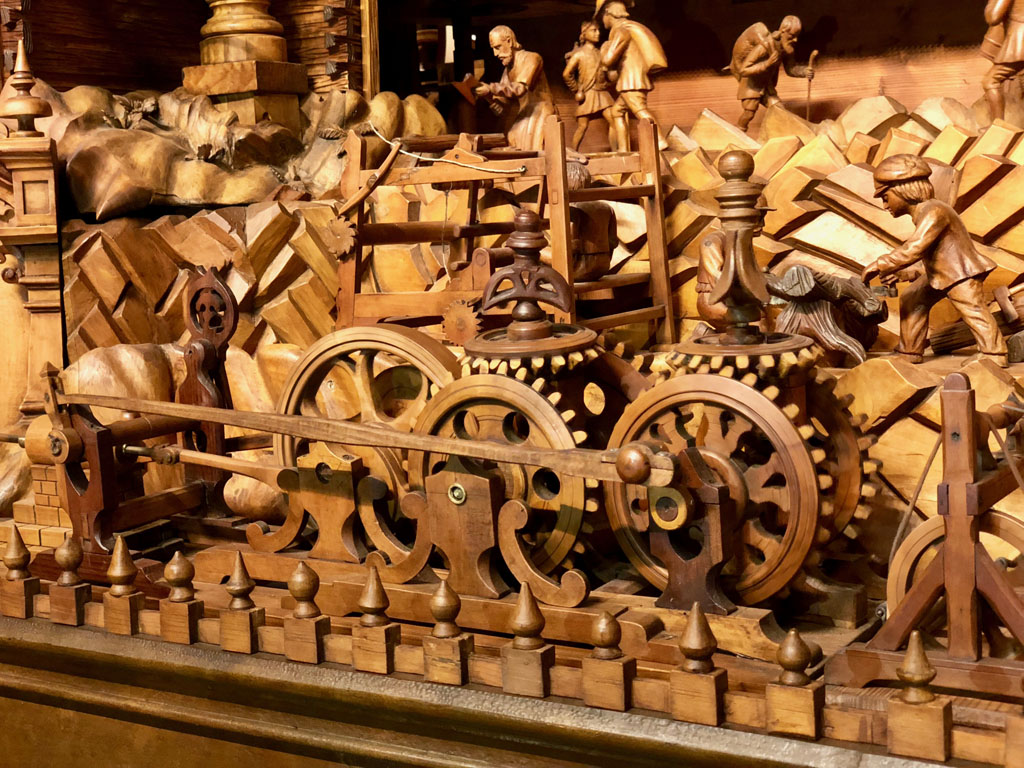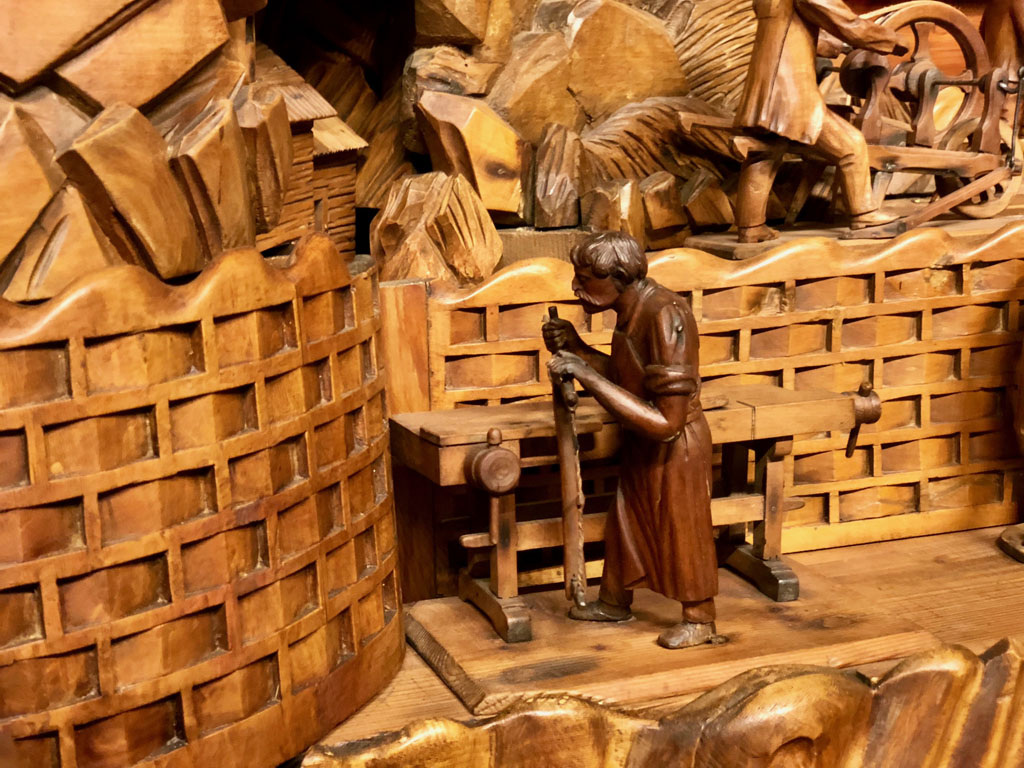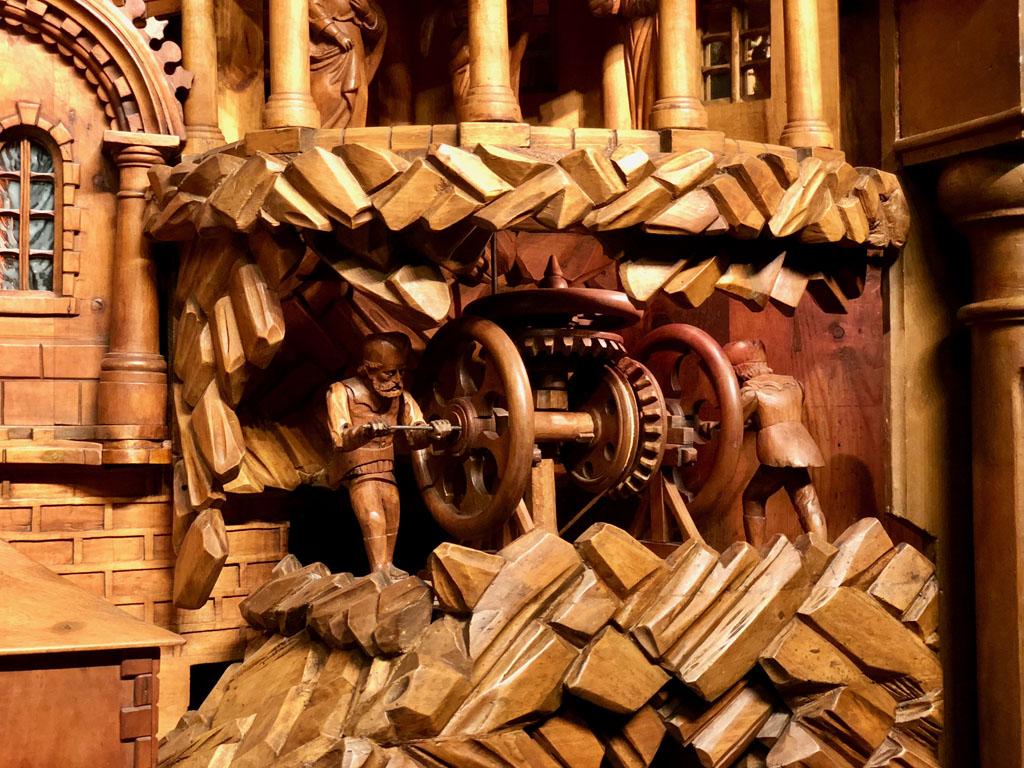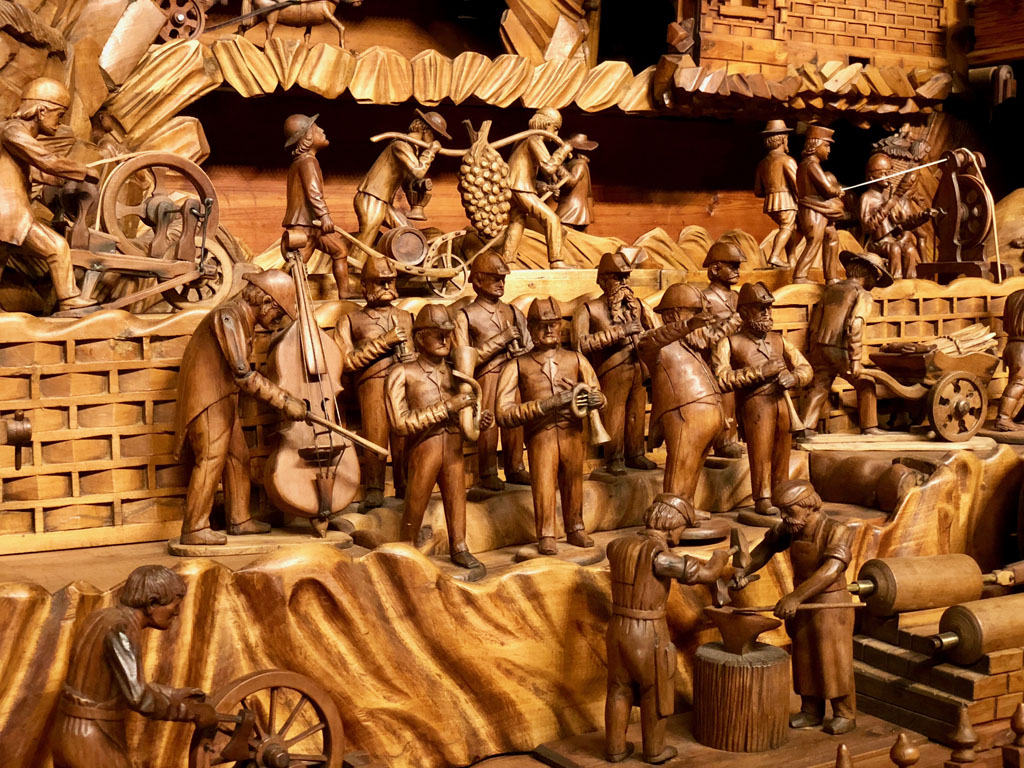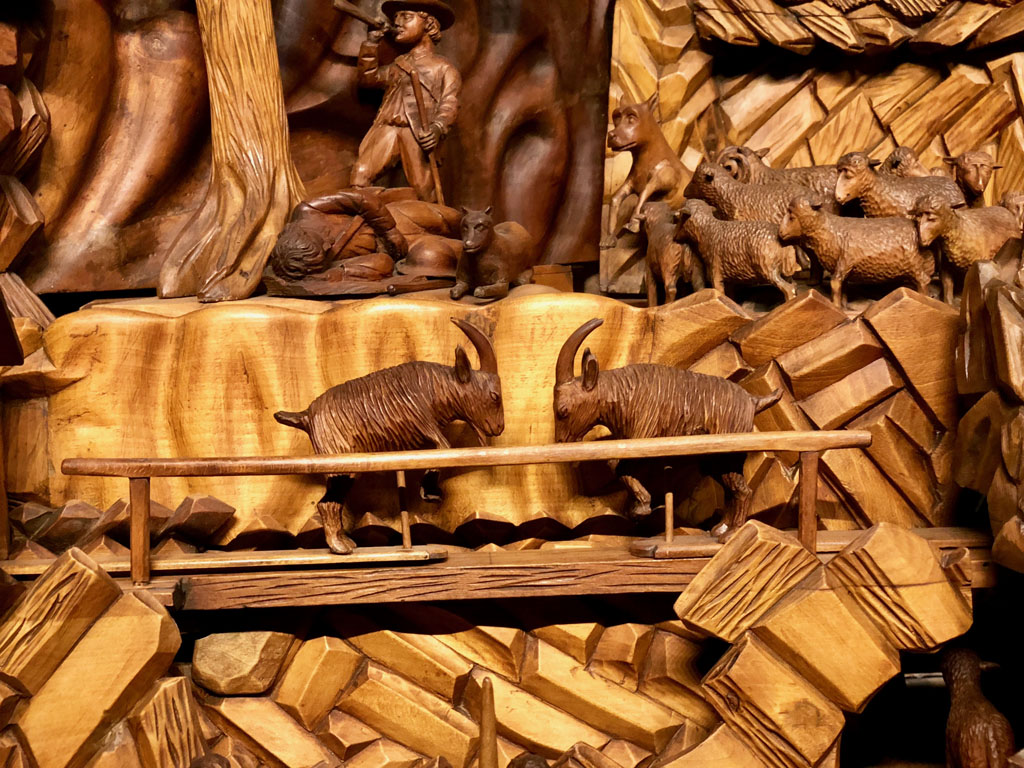Czech Nativity Scenes
Nativity scenes are an inseparable part of Christmas in the Czech Republic, and as the festive season approaches you will find them at almost every Christmas market. Nearly every Czech city or town has a Christmas tree in the main square with a nativity scene beneath the tree. Each nativity scene is original and unique. The story of baby Jesus, with a manger for a crib, is shown in many ways by artists and one artist in particular is responsible for perhaps the most elaborate nativity automata in Europe: Josef Probošt.
Probošt’s mechanical Christmas crib
Czech farmer and carpenter Josef Probošt lived in a small village called Třebechovice pod Orebem (current population 5700), about 120 km east of Prague in the Czech Republic. In 1999 his automata was declared a Czech national cultural monument, but work actually started in 1885, while Queen Victoria was still on the British throne.
It is thought that he initially made it for his wife, following the death of their 7 month old son. She liked it and he decided to enlarge it, bringing in another carver Josef Kapucián, and Josef Friml who was a “mill carpenter” and a specialist in the making of cog wheels and other mechanical parts made of wood. Probošt was a deeply religious man who held his work for an altar. His original, modest concept was of a religiously based nativity scene with the infant Christ, angels, stars, wise men and so on.
As it grew year for year, the concept grew with it to show all aspects of rural life in Bohemia at the beginning of the twentieth century including subjects such as mining, carpentry, weaving and farming, not forgetting the blacksmiths and the musicians. Local residents who visited Probošt to admire the nativity scene during its construction served as models for many of the characters depicted. Probošt himself can be seen as a carpenter and Kapucián as a wise old man. Probošt kept working on it for forty years until he died in 1926, leaving all of the farmwork to be done by his wife and daughter…
How does it work?
To make it work, there is a large wooden wheel around the back which could originally be turned by hand, activating the belt drives, shafts, cogs, cams, wooden chains etc. to bring all of the scenes to life. From 1935 a motor was used and since its extensive restoration a few years ago, an electronically controlled electric motor does the work, with laser beams monitoring its smooth operation.
It is 23 feet long and is made up of about 2 000 carved parts, including 373 individual figures, illustrating 51 crafts in the community with 120 figures which move in a procession around the scene on simple but obviously effective wooden conveyors.
Where can you see it?
It was first exhibited in 1906 at the Provincial Artisan Union in Chrast where it won a diploma and a gold medal. After Probošt’s death it was occasionally exhibited in various places in central Europe, even being shown at Expo 67 in Montreal where more than 8 million visitors saw it, including Queen Elizabeth II and in 1970 it was shown in London at the Ideal Home Show exhibition.
Since 1972, it can be seen in a small village called Třebechovice pod Orebem, which is presumably part of the Czech government’s attempt to entice tourists away from central Prague. You can drive there, or, from Prague you can take a train to a town called Hradec Králové and there you can change trains to cover the last 14 km to Třebechovice. From the station it is a short walk to the Museum of Christmas Cribs. The village has one small restaurant, Restaurace Na Roli serving traditional Czech meals.
It is fascinating to see how a vast automata could be built up by a man with a passion, helped by a couple of friends, using very rudimentary but very effective technology, over half a century before the Mechanical Model Museum in Covent Garden launched the new wave of automata building. Equally fascinating is to consider the trades and activities shown and to consider what their contemporary equivalents might look like, carved in lime wood of course.
Details
Museum web site http://www.betlem.cz/en/
One minute video
Twenty minute video
The wooden conveyor mechanism

